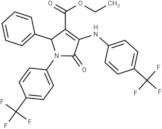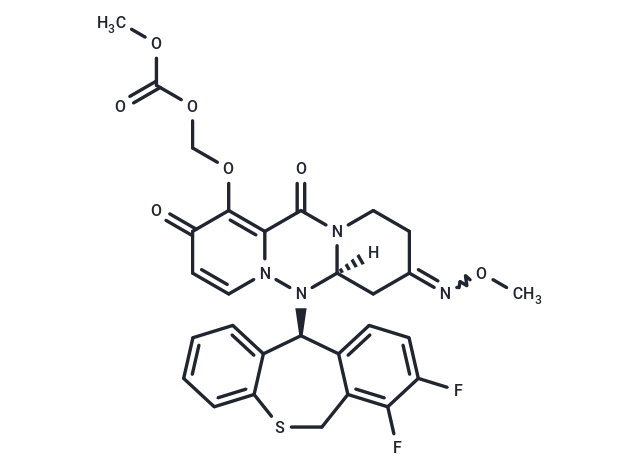TM-TMPY-06742 - Influenza A H1N1 Apuerto Rico81934 Neuraminidasena Protein His
Sorry, no product with reference TM-TMPY-06742has been found, but please check out the following similar products:
See more
Ref: 41-E0850010
| 3x1mg | 137.00 € |
Estimated delivery in United States, on Tuesday 4 Mar 2025

Ref: 41-E0850021
| 3x1mg | 137.00 € |
Estimated delivery in United States, on Tuesday 4 Mar 2025

Ref: 41-E0850022
| 3x1mg | 137.00 € |
Estimated delivery in United States, on Tuesday 4 Mar 2025

Ref: 41-Y0000712
| 3x1mg | 137.00 € |
Estimated delivery in United States, on Tuesday 4 Mar 2025

Ref: 41-Y0001874
| 1mg | 137.00 € |
Estimated delivery in United States, on Tuesday 4 Mar 2025

Ref: 54-BITP1939
| 1mg | 2,796.00 € | ||
| 10µg | 186.00 € | ||
| 50µg | 264.00 € |
Estimated delivery in United States, on Wednesday 5 Mar 2025

Influenza A virus fragment
Influenza A virus fragment has the RNA sequence of Leu-Lys-Phe-Ala-Phe-Ser-Met-Met.
Formula:
C46H71N9O10S2
Purity:
98%
Color and Shape:
Solid
Molecular weight:
974.24
Ref: TM-T22868
| 5mg | 113.00 € | ||
| 10mg | 180.00 € | ||
| 25mg | 250.00 € |
Estimated delivery in United States, on Wednesday 5 Mar 2025

Influenza A virus-IN-1
CAS:2250313-14-3
Influenza A virus-IN-1, a dihydropyrrolidone, blocks IAV subtypes (IC50: 3.11-7.13 μM), boosts IFN-β and MxA …
Formula:
C27H20F6N2O3
Color and Shape:
Solid
Molecular weight:
534.458
Ref: TM-T39778
| 5mg | 922.00 € |
Estimated delivery in United States, on Wednesday 5 Mar 2025

Influenza virus-IN-7
CAS:2703046-92-6
Influenza virus-IN-7: oral endonuclease inhibitor for flu research.
Formula:
C29H26F2N4O7S
Color and Shape:
Liquid
Molecular weight:
612.6
Ref: TM-T75166
| 5mg | To inquire | ||
| 50mg | To inquire |
Estimated delivery in United States, on Wednesday 5 Mar 2025

Influenza HA (518-526)
CAS:186302-15-8
Influenza HA (518-526) is an immunodominant epitope in H2d mice after flu virus infection.
Formula:
C42H69N9O15
Purity:
98%
Color and Shape:
Solid
Molecular weight:
940.05
Ref: TM-TP1517
| 100mg | To inquire | ||
| 500mg | To inquire |
Estimated delivery in United States, on Wednesday 5 Mar 2025

CEF7, Influenza Virus NP (380-388)
CAS:147100-46-7
HLA-B*08 restricted influenza virus nucleoprotein epitope.
Formula:
C55H84N16O14
Purity:
98%
Color and Shape:
Solid
Molecular weight:
1193.35
Ref: TM-TP1596
| 100mg | To inquire | ||
| 500mg | To inquire |
Estimated delivery in United States, on Wednesday 5 Mar 2025

Influenza NP (147-155) (TFA)
This peptide is a H2-Db-restricted epitope from Influenza nucleoprotein (147-155).
Formula:
C50H83F3N16O16
Purity:
98%
Color and Shape:
Solid
Molecular weight:
1221.29
Ref: TM-TP1632
| 100mg | To inquire | ||
| 500mg | To inquire |
Estimated delivery in United States, on Wednesday 5 Mar 2025

Influenza A NP(366-374) Strain A/PR/8/35
CAS:132326-73-9
This peptide is an H2-Db-restricted epitope from the Influenza A/PR/8/34 nucleoprotein.
Formula:
C38H63N11O18S2
Purity:
98%
Color and Shape:
Solid
Molecular weight:
1026.1
Ref: TM-TP1644
| 100mg | To inquire | ||
| 500mg | To inquire |
Estimated delivery in United States, on Wednesday 5 Mar 2025

Influenza NP (147-155)
CAS:132326-72-8
This peptide is a H-2Kd-restricted epitope from Influenza nucleoprotein (147-155).
Formula:
C48H82N16O14
Purity:
98%
Color and Shape:
Solid
Molecular weight:
1107.26
Ref: TM-TP1646
| 100mg | To inquire | ||
| 500mg | To inquire |
Estimated delivery in United States, on Wednesday 5 Mar 2025

CEF1, Influenza Matrix Protein M1 (58-66)
CAS:141368-69-6
CEF1, M1 (58-66) epitope from influenza A; GILGFVFTL is HLA-A2-restricted.
Formula:
C49H75N9O11
Purity:
98%
Color and Shape:
Solid
Molecular weight:
966.17
Ref: TM-TP1717
| 100mg | To inquire | ||
| 500mg | To inquire |
Estimated delivery in United States, on Wednesday 5 Mar 2025

Influenza HA (126-138)
CAS:207349-63-1
Influenza HA (126-138), a peptide from the virus's HA protein, induces apoptosis in T-cells.
Formula:
C52H81N19O22
Purity:
98%
Color and Shape:
Solid
Molecular weight:
1324.31
Ref: TM-TP1735
| 100mg | To inquire | ||
| 500mg | To inquire |
Estimated delivery in United States, on Wednesday 5 Mar 2025

Influenza HA (307-319)
CAS:528526-85-4
Influenza Hemagglutinin is an HLA-DRB 0101-restricted epitope from influenza hemagglutinin (307-319).
Formula:
C69H118N18O19
Purity:
98%
Color and Shape:
Solid
Molecular weight:
1503.78
Ref: TM-TP1854
| 100mg | To inquire | ||
| 500mg | To inquire |
Estimated delivery in United States, on Wednesday 5 Mar 2025

PA (224-233), Influenza
CAS:271573-27-4
PA (224-233), Influenza is a 10-aa peptide, which is a fragment of polymerase 2 protein …
Formula:
C53H80N14O17
Purity:
98%
Color and Shape:
Solid
Molecular weight:
1185.29
Ref: TM-TP1867
| 1mg | 88.00 € | ||
| 5mg | 172.00 € | ||
| 10mg | 274.00 € |
Estimated delivery in United States, on Wednesday 5 Mar 2025

Influenza A H1N1 (A/Texas/36/1991) Hemagglutinin/HA1 Protein (His)
Influenza A H1N1 (A/Texas/36/1991) Hemagglutinin/HA1 Protein (His) is expressed in HEK293 mammalian cells with His …
Color and Shape:
Liquid
Molecular weight:
38.1 kDa (predicted)
Ref: TM-TMPY-00011
| 100µg | 709.00 € |
Estimated delivery in United States, on Friday 7 Mar 2025

Influenza A H3N2 (A/Texas/50/2012) Hemagglutinin/HA1 Protein (His)
Influenza A H3N2 (A/Texas/50/2012) Hemagglutinin/HA1 Protein (His) is expressed in HEK293 mammalian cells with His …
Purity:
95.8%
Color and Shape:
Liquid
Molecular weight:
38.1 kDa (predicted)
Ref: TM-TMPY-00012
| 100µg | 464.00 € | ||
| 200µg | 780.00 € | ||
| 500µg | 1,580.00 € |
Estimated delivery in United States, on Friday 7 Mar 2025




















